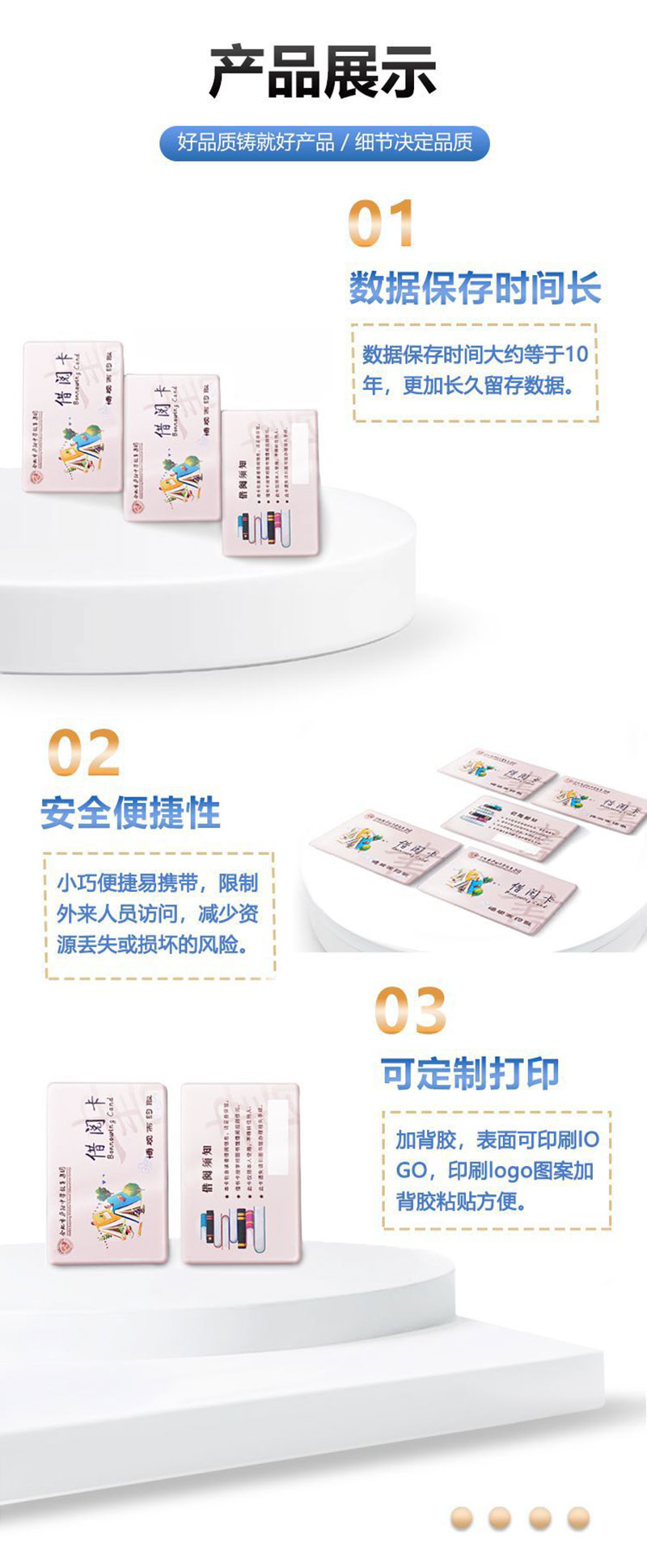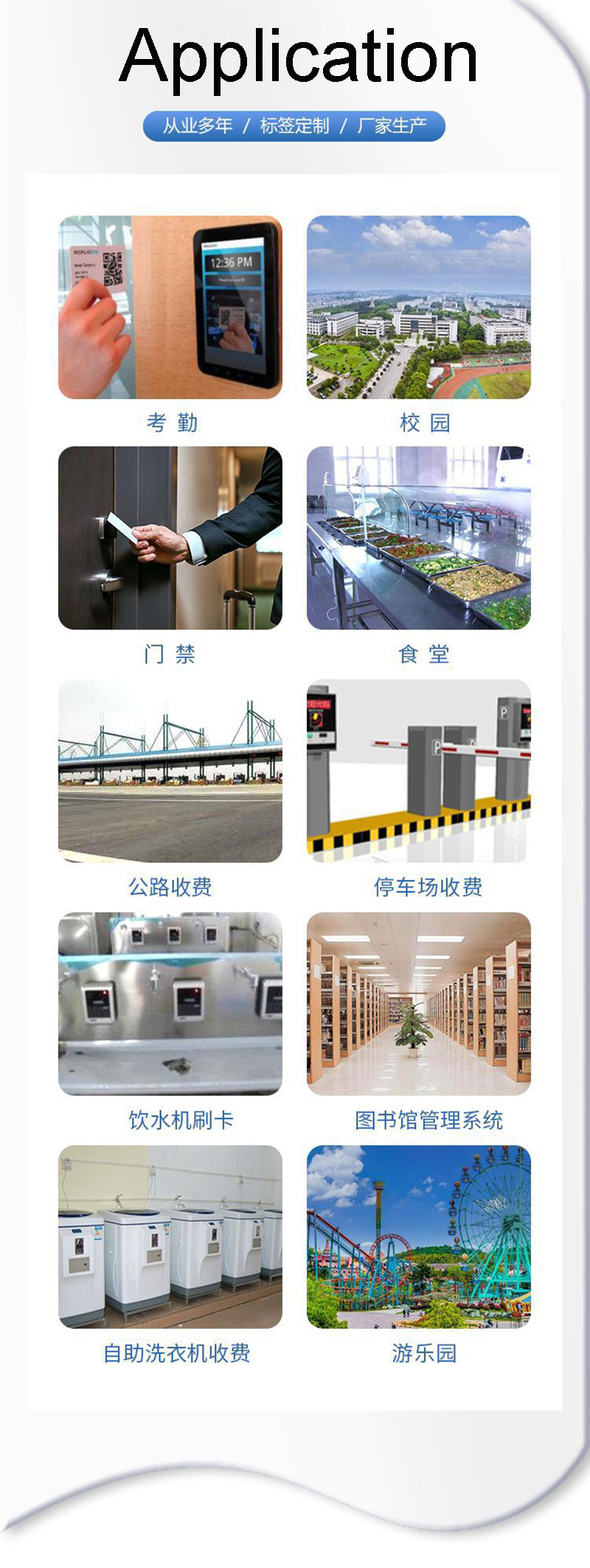Size:85.5x54MM
Material:PVC
Chip:F08
Capacity:1K BYTES
Working frequency: 13.56MHZ
Protocol: ISO 14443A
Reading and writing distance: close reading
Working mode: read and write
Number of reads and writes: 100,000 times
Reading and writing time: 1-2MS
Service life:≥10 years
Application scenarios: library borrowing, campus card function, self-service borrowing and returning equipment, cross-library borrowing, etc.
RFID Library Card uses advanced radio frequency identification technology to make borrowing books simple and fast. With just one swipe, book information can be read instantly, saying goodbye to tedious manual registration and reducing waiting time. In addition, the RFID book reading and writing certificate also has a powerful anti-theft function. When unborrowed books pass through the security door, the system will automatically trigger an alarm to ensure the safety of the books. Literacy Certificate focuses more on providing readers with high-quality consulting and information services.
Improve book circulation efficiency
RFID technology makes the borrowing and returning process of books faster and more convenient. Readers only need to place books in the reading area of the self-service book borrowing and returning machine, and the machine can quickly read the book information and complete the borrowing and returning operation, which greatly simplifies the process and reduces the time of waiting in line.
Reduce book loss rate
RFID electronic tags not only Store identification information of books, but also contain security information. The security information on the tags of normally borrowed books will be automatically written as safe. When unborrowed books enter and exit the security door, the reader will detect and trigger an audible and visual alarm, thus effectively reducing the loss of books.
Improve inventory efficiency
Traditional warehouse-smart-inventory-rfid-bookshelf.html target='_blank'>book inventory is workload-intensive and error-prone, but RFID Readers can read information in a non-contact manner and can read multiple tags at one time, greatly improving the efficiency and accuracy of inventory.
Improve service levels
The introduction of RFID technology makes library services more humane and intelligent. Readers can complete borrowing and returning operations by themselves, which reduces contact and conflicts with staff and protects readers' reading privacy. At the same time, librarians can be freed from heavy mechanical operations and engage more in reader consultation, information services, etc., improving the overall service level.
In general, the application of RFID reading and writing certificates in the library field not only improves work efficiency and reduces costs, but also improves service quality and reader satisfaction. However, it is also necessary to pay attention to issues such as cost investment and information security of RFID technology to ensure that its application in the library field can continue to exert its advantages continuously and stably.


Contact: Adam
Phone: +86 18205991243
E-mail: sale1@rfid-life.com
Add: No.987,Innovation Park,Huli District,Xiamen,China